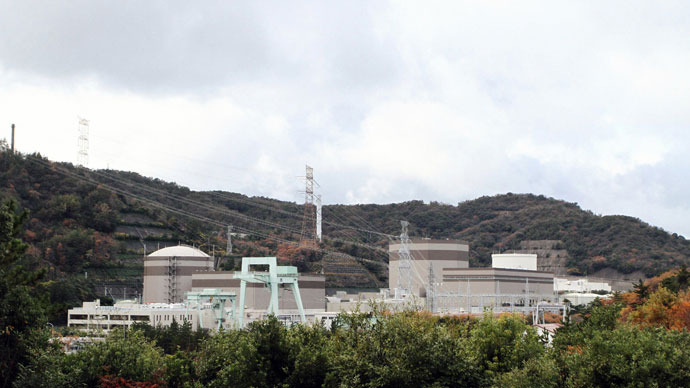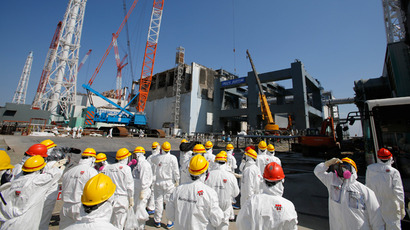Japan poised for first permanent reactor closure following Fukushima

Experts determined an active geological fault line lies underneath a reactor on Japan’s west coast, a discovery which will likely result in the first permanent shutdown of a nuclear power plant since the 2011 Fukushima crisis.
The report by the panel of five seismologists advising the
Nuclear Regulation Authority (NRA) is the first issued on its
investigation into active fault lines at the Tsuruga plant, which
is located on the Japan Sea coast. The Tsuruga plant – which has
been operating for 43 years – has two reactors, with the fault line
having been discovered directly under the idled No. 2 reactor.
"Safety levels [at Tsuruga] have been low and it is really just
a matter of luck that there hasn't been an accident," Reuters
cites Kunihiko Shimazaki, the head of the panel and a commissioner
of the NRA, as saying after the report was finalized. "We are
taking the first steps to correct the situation."
The NRA is set to determine the Tsuruga plant’s fate at its regular
meeting scheduled in a week’s time. The experts’ finding is
likely to kill any chance the reactor will ever be reactivated, as
government regulations prohibit the construction of reactor
buildings directly above any active fault line.
NRA chairman Shunichi Tanaka has previously said that no evaluation
for the resumption of operations at the Tsuruga plant would be
conducted if an active fault was found, Japan’s Asashi Shimbun
reported.
Japan Atomic Power Co., which operates the two-reactor Tsuruga
station, reacted to the findings with disbelief, accusing the panel
of bias.
"We deeply regret that they made such a conclusion this time and
it is absolutely impossible for us to accept it," the company
said in a statement.
"We hereby ask the panel of experts to come to a fresh
conclusion after reviewing existing data with a neutral and fair
point of view, with discussion on a strictly scientific basis and
clarification of the grounds of understanding."
The mayor of Tsuruga Kazuharu Kawase said on Monday he was worried
nuclear regulators were rushing “towards a conclusion”
regarding the atomic plants fate, adding that Japan Atomic Power
had yet to finish its own investigation.
“I want the NRA to cautiously deliberate the matter from a broad
viewpoint, reflecting the outcome of the operator’s investigation
and various opinions in and outside the country,” the Japan
Times cites him as saying.
Japan Atomic Power has claimed the fault is inactive based on its
analysis of volcanic ash, which they say shows no signs of recent
movement. The panel has dismissed the claim as unreliable.
The experts determined that the fault, a zone of pebbles and
sediment dubbed D-1, could shift simultaneously with two others:
one known as K and the other an active major called Urazoko.
The K fault, which has apparently moved within the past 130,000
years, is therefore considered to be technically active. They
further say that the D-1 fault is also active as it is a part of
this structure, while the Urazoko fault is located some 200-300
meters from the reactor buildings.

Japan's nuclear operators have faced massive losses following an earthquake and tsunami in March 2011, which caused three reactor meltdowns at the Fukushima Daiichi plant.
Currently, 48 of the country’s 50 nuclear reactors are suspended from operations, although the country’s nuclear industry had expected early restarts based on past experience with regulators.
"It is no longer business as usual. This is the beginning of a long-term restructuring of the nuclear power business in Japan," a senior adviser on atomic policy told Reuters on condition of anonymity.
The experts will conduct a total of six studies on faults at six locations near nuclear plants.
With the atomic industry faltering, last week Japan’s ruling Liberal Democratic Party (LDP) promised to bring the country’s nuclear reactors back into service once they had been verified as safe.
The country’s public remains ambivalent about the government’s nuclear plans, according to a poll published in the Tokyo Shimbun newspaper in March.
While 79.6 per cent of those questioned were at least moderately in favor of parting with nuclear power eventually, 69 per cent said they would support the restarting of some nuclear reactors to fulfill the Japan’s current power needs.
The same month the poll was conducted, some 13,000 people gathered in Tokyo to protest the continued use of nuclear power in Japan nearly two years after the Fukushima disaster.















